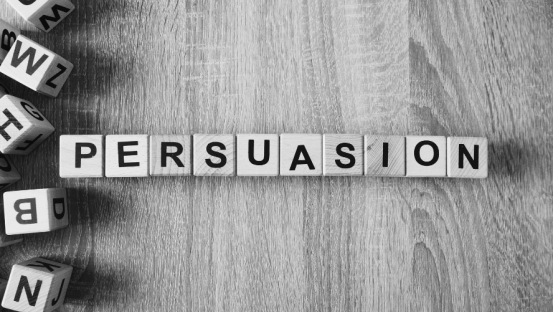8 Tips on Getting Speaking Engagements Using Effective Cold Email Outreach

Did you know that 75% of people across the globe suffer from anxiety when faced with having to speak in public? However, public speaking is beneficial for your business in many ways. You can generate more leads, find new customers, increase brand awareness, and position yourself as an expert. Are you looking to get more speaking engagements? If so, you're in luck! You can do a few things to increase your chances of getting booked.
One of the best ways to get started is by using effective cold email outreach. By sending well-crafted emails, you can make a great first impression and increase your chances of being chosen for a gig.
This post will give tips on how to craft an effective cold email to help you score more speaking gigs. Keep reading to learn more.
1. Do your initial research
Before you start reaching out to potential clients, it's essential to do your research. First, you'll want to identify your target audience and find out what kind of events they attend. Once you know this, you can start looking for conferences and events that fit this profile, that would suit you.
Use online resources. Depending on your location, several online resources can help you find speaking engagements, including event directories and conference websites—for example, SpeakerHub.
SpeakerHub allows you to quickly find speakers, organizers, agencies, or events in a specific industry. In case you are searching for the next event near you, there is a helpful filter where you can filter the results based on the location, event type, field, language, speaker role, and much more. It is a great starting point for doing initial research for cold email outreach.
2. Reach out to the right decision-makers
When doing your research, identifying the right decision-makers is also important, i.e., you'll want to identify the person responsible for booking speakers for each event. This way, you can ensure your email gets in front of the right person.
You can use LinkedIn and Hunter to find the correct decision-maker. These tools will help you build a list of valid email addresses that you can use for outreach. LinkedIn shows what people work in different companies and their roles, while Hunter will help you find the email addresses of these people.
Here is an effective process for identifying a decision-maker:
-
Find the company that organizes the conference
-
Use a search engine to find this company’s website. Look for employee information there.
-
Find the company on LinkedIn: usually, they have a list of employees on their pages
-
From the information obtained, try to figure out who is responsible for the conference
-
Use the email lookup tool Hunter to find any email addresses you haven’t yet found
-
Make sure to verify email addresses
-
Write a standard email, create personalized versions, and start your campaign

It is important when doing cold email outreach to verify your prospects' email addresses. This will help ensure that your emails are actually delivered to the right person. For instance, if your emails bounce, you can seriously harm your sender's reputation if bounce rates go out of control (acceptable bounce rate is up to 2%).
Verifying email addresses will increase your chances of getting a response from your prospect as a high deliverability record increases the chances of your emails actually getting to recipients' inboxes rather than spam folders.
3. Write engaging and relevant subject lines
Your subject line is one of the most critical aspects of your email. It should make the recipient want to open your email in the first place. So make sure your subject lines are clear, concise, and engaging.
Your subject line should be relevant to the recipient and make them want to learn more about what you have to say. If your subject line is boring or confusing, the chances are good that your email will be ignored. Let's take a look at some good and bad subject lines:
Good subject lines examples:
1. "Congrats on {{event}} I want to be your speaker!"
2. "I know how to increase leads in {{company name}} with public speaking"
3. "Looking for speaking opportunities at {{company’s}} conference in the XYZ industry"
4. "I know how to engage your audience at {{conference name}}."
5. {{first_name}}, can we connect about XYZ conference?
Bad subject lines examples:
1. "Hello, I'm looking for speaking opportunities"
2. "I want to speak at your event"
3. "This is my proposal for a talk"
4. "Please read"
5. "My rates for speaking engagements"
Avoid using generic phrases like "I want to speak" or "please read." Instead, try to be specific and include relevant keywords.
Moreover, you can use the SubjectLine tool to evaluate your email subject line and give you actionable tips on how to improve it.

4. Write a personalized email opener
After doing your research, start contacting the event organizers. An email opener is essential because it's your opportunity to make an excellent first impression. It's the first thing the recipient will see, so you want to ensure it's strong and relevant. If you can capture their attention with your opener, they'll be more likely to look at the rest of your content.
Your email should be addressed to the event organizer by name. This shows that you've taken the time to research the recipient and makes your email seem more personal.
Write a personalized email opener that will grab the recipient's attention. Start by introducing yourself and your company. Then, explain why you're interested in speaking at their event.
Next, mention some of your relevant experience and highlight your essential qualifications. Finally, include a call to action that encourages the recipient to learn more about you.
Rather than using a generic email template, you should write an engaging personalized email opener. To do that you can check out the prospect’s LinkedIn or Instagram and find out their interests and hobbies that you could maybe weave into your email. Just try your best to make the email personal and show that you did in-depth research.
Here's an example of a personalized email opener:
"Hello, (Name)
My name is Jane Smith, and I work for ABC Company. We're a leading provider of XYZ services. I noticed on your LinkedIn that you will host an event about XYZ soon. I'm interested in speaking at your event because I believe my experience in (***) would be invaluable to your audience. "
When you're writing to event organizers, it's important to be clear and concise in your emails. Event organizers are busy people, so they'll appreciate an email that gets straight to the point.
5. Craft engaging email copy
Now that you have the recipient's attention, your goal is to convince the event organizer that you're the right person for the job.
To do this, you'll need to highlight your relevant experience and qualifications. Start by briefly introducing yourself and your company. Then, explain why you're the perfect person for the event. Use specific examples to illustrate your points.
For instance, if you're a sales expert, you could talk about how you helped your company increase its sales by 20% last year. If you're a marketing expert, you could talk about how you successfully launched a new product. Statistics and numbers, as long as they are backed-up, will convince potential prospects that you are an expert in your field.
In addition, you'll want to use a friendly and professional tone throughout your email. Be sure to proofread your email before sending it, as grammatical errors make you appear unprofessional.
6. Share a video of you speaking
Another great idea is to share a video to show prospects that you are not only an expert but a professional speaker who knows how to engage an audience and keep their attention.
Including a speaking video as part of your outreach can be extremely helpful in getting your foot in the door. If you don't have this kind of video, you’ll need to create it. Check out numerous videos of good speaking practice on Youtube.
When creating a video, follow these simple tips:
-
Focus on delivering engaging and exciting content
-
Show your expertise on a certain topic
-
Be confident
-
Keep your reel shorter than 4 minutes
-
Showcase your best work
-
Add short videos or photos from other previous speaking events
-
Share some testimonials, if possible
Including a link to your video in your outreach email can help you stand out from the crowd and increase your chances of getting a speaking engagement.
7. Add a full professional signature
When sending an email to a potential speaking engagement, you must include all relevant information about yourself in your signature. This includes your name, title, company, website, and contact information.
A well-crafted signature shows that you are professional and increases your chances of getting a response from your outreach email.

Source
There are a few more things to bear in mind when crafting your CTA and email sign-off, in order to increase your chances of getting a speaking engagement.
First, make sure your CTA is actionable. Tell the recipient what you want them to do, such as "click here to learn more" or "call me to discuss further." Be clear about what your reader needs to do next.
Second, use an email sign-off that inspires confidence. Try phrases such as "thank you for your time" or "I look forward to hearing from you soon."
These simple tips can help boost your conversion rate and get you one step closer to securing that coveted speaking engagement.
8. Test your campaigns
Now that you know how to craft an effective cold email, it's time to put your skills to the test. The best way to do this is to A/B test your email campaigns.
A/B testing involves sending out two different versions of your email to a small group of people and then measuring the results. This allows you to see what works and what doesn't so that you can make necessary adjustments.
Things you may want to test are the subject line, email copy, CTA, and the time of day you send your email. By testing different elements of your email, you can fine-tune your outreach strategy and increase your chances of getting that speaking engagement.
Crucial cold email metrics & ways to interpret them
There are a few key metrics you'll want to track when sending out cold emails for a speaking engagement. These include email open rate, click-through rate, and reply rate.
-
Email open rate. Your email open rate is the percentage of people who open your email out of the total number of people you've sent it to. This number can be found in your email marketing software.
-
Click-through rate. Your click-through rate is the percentage of people who click on your CTA out of the total number of people who opened your email.
-
Reply rate. Your reply rate is the percentage of people who respond to your email out of the total number of people you've sent it to. If not included in your statistics, this number can be tracked manually by keeping a tally of your replies.
Interpreting these metrics will help you understand how well your email is performing and whether or not you need to make any changes.
Once you've tracked the key metrics for your cold email campaign, it's time to make some adjustments based on the results.
For example, a low open rate could indicate that your subject line and email preheader need some rework. A low click-through rate could mean that your CTA isn't effective. And a low reply rate could suggest that your email copy isn't compelling or relevant enough. Another underlooked reason why reply rates might suffer is simply by reaching out to the wrong person in the company. While building your email lists, make sure to reach out to the most relevant person for your request.
By tracking these metrics and interpreting the results, you can make necessary adjustments to your email campaign and increase your chances of getting a speaking engagement.
Templates for getting awesome speaking engagements
Now that you know how to craft an effective cold email, it's time to put your skills to the test! Below we have shared 2 email templates for successful cold outreach. You can start with these email templates and adjust them to suit your needs. Make sure to use our tips in the subject line and email copy.
1. Email template to find the right person can come in handy if you found contacts of event managers, but you are not sure if this is the right person to get in touch with:

Source
2. This email template was specifically crafted for people responsible for events, yet this is another way to find the right person to contact.

Source
Conclusion
It's challenging to connect with the right people to be considered for a speaking engagement. Cold email outreach can help you with this if done right.
Let me summarize. To get speaking engagement via cold email outreach, you need to:
-
do initial research via LinkedIn and Hunter to find the decision-makers responsible for the event;
-
write a powerful and engaging subject line;
-
write a personalized email opener;
-
craft compelling email copy;
-
pitch yourself and share your speaking video to prove your skills;
-
add a professional email signature;
-
craft your CTA;
-
test your campaigns, analyze mistakes, and repeat.
About the author:
Antonio is an outreach manager at Hunter. He is passionate about testing different outreach tactics and sharing results with the community. When he is not connecting with industry leaders you can find him on his motorbike exploring off-the-beaten paths around the world.





